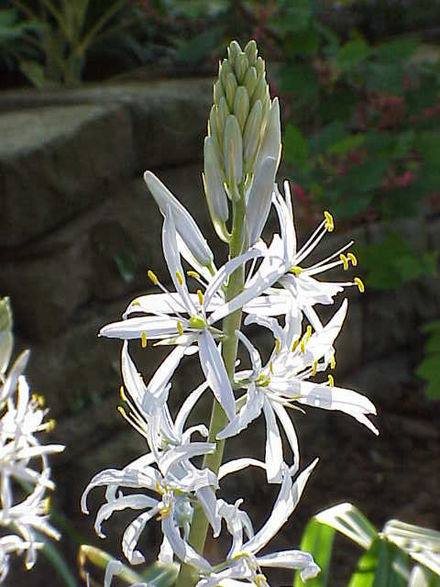Camassia
Camassia is a genus of plants in the asparagus family native to North America. Common names include camas, quamash, Indian hyacinth, camash, and wild hyacinth.[citation needed]
It grows in the wild in great numbers in moist meadows. They are perennial plants with basal linear leaves measuring 20 to 80 centimetres (8 to 32 in) in length, which emerge early in the spring. They grow to a height of 30 to 130 cm (12 to 50 in), with a multi-flowered stem rising above the main plant in summer. The six-petaled flowers vary in color from pale lilac or white to deep purple or blue-violet. Camas can appear to color entire meadows when in flower.
Historically, the genus was placed in the lily family (Liliaceae), when this was very broadly defined to include most lilioid monocots.[2] When the Liliaceae was split, in some treatments Camassia was placed in a family called Hyacinthaceae (now the subfamily Scilloideae).[3] DNA and biochemical studies have led the Angiosperm Phylogeny Group to reassign Camassia to the family Asparagaceae, subfamily Agavoideae.[4]
The World Checklist of Selected Plant Families recognizes six species as of April 2015[update]:[1][5][6]
The name Camassia biflora was coined in 1969[7] for a South American species now known as Oziroe biflora.[8]
The term Camassia esculenta is a confusing one. Not an accepted name, it has been used twice, both for Camassia quamash and for Camassia scilloides. Consequently, the reference to Camassia esculenta (Ker Gawl.) B.L.Rob.[9] as a synonym for C. scilloides is deemed illegitimate,[10] while reference to Camassia esculenta (Nutt.) Lindl.[11] is a non-accepted name (synonym) for C. quamash subsp. quamash.[12] Hence the continuing horticultural usage without qualification is potentially confusing.[13]

